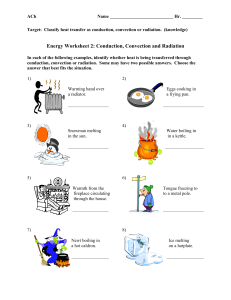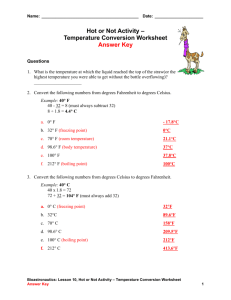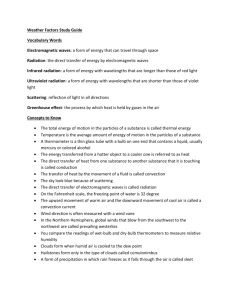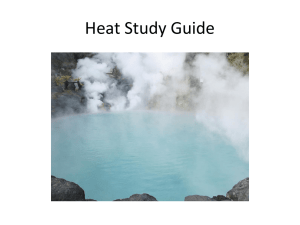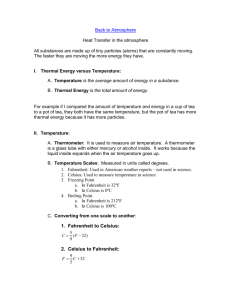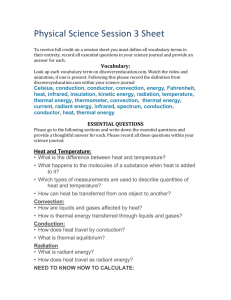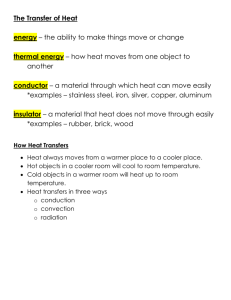Meteorology SG #2
advertisement
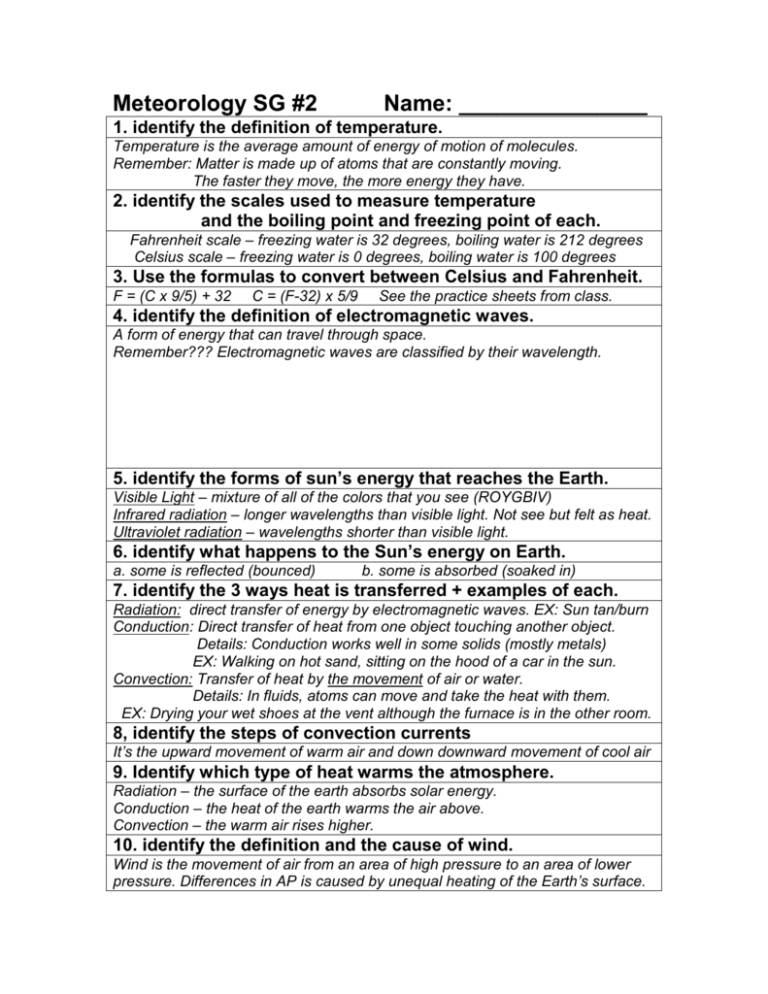
Meteorology SG #2 Name: _______________ 1. identify the definition of temperature. Temperature is the average amount of energy of motion of molecules. Remember: Matter is made up of atoms that are constantly moving. The faster they move, the more energy they have. 2. identify the scales used to measure temperature and the boiling point and freezing point of each. Fahrenheit scale – freezing water is 32 degrees, boiling water is 212 degrees Celsius scale – freezing water is 0 degrees, boiling water is 100 degrees 3. Use the formulas to convert between Celsius and Fahrenheit. F = (C x 9/5) + 32 C = (F-32) x 5/9 See the practice sheets from class. 4. identify the definition of electromagnetic waves. A form of energy that can travel through space. Remember??? Electromagnetic waves are classified by their wavelength. 5. identify the forms of sun’s energy that reaches the Earth. Visible Light – mixture of all of the colors that you see (ROYGBIV) Infrared radiation – longer wavelengths than visible light. Not see but felt as heat. Ultraviolet radiation – wavelengths shorter than visible light. 6. identify what happens to the Sun’s energy on Earth. a. some is reflected (bounced) b. some is absorbed (soaked in) 7. identify the 3 ways heat is transferred + examples of each. Radiation: direct transfer of energy by electromagnetic waves. EX: Sun tan/burn Conduction: Direct transfer of heat from one object touching another object. Details: Conduction works well in some solids (mostly metals) EX: Walking on hot sand, sitting on the hood of a car in the sun. Convection: Transfer of heat by the movement of air or water. Details: In fluids, atoms can move and take the heat with them. EX: Drying your wet shoes at the vent although the furnace is in the other room. 8, identify the steps of convection currents It’s the upward movement of warm air and down downward movement of cool air 9. Identify which type of heat warms the atmosphere. Radiation – the surface of the earth absorbs solar energy. Conduction – the heat of the earth warms the air above. Convection – the warm air rises higher. 10. identify the definition and the cause of wind. Wind is the movement of air from an area of high pressure to an area of lower pressure. Differences in AP is caused by unequal heating of the Earth’s surface.
